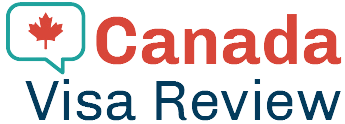Immigration, Refugees and Citizenship Canada (IRCC) has outlined a new TEER classification system of organizing occupations in line with their goal to increase the quality of foreign worker candidates entering the Canadian labour market. The following takes a look at these changes in comparison with the current NOC system.
What is The National Classification System (NOC)?

Before you can live and work in Canada, you will need to know the ins and outs about how Canada’s NOC system works. In particular, the new TEER additions added to the NOC system, categorized in tiers of descriptions, will form an important part of the decision making process for new workers in Canada.
The NOC system is designed to evaluate the skill level of foreign workers, which in turn classifies their occupations. Under the current system, a foreign worker would have to find and assess their skill level through the NOC skill type classification system. Jobs are grouped according to the duties being performed and the type of experience the individual gains within the said occupation.
Furthermore, foreign workers should remember that the IRCC, Statistics Canada along with Employment and Social Development Canada (ESDC), announced that they’ll be making some further adjustments to the NOC system later in 2023.
A Comparative Look At The Differences Between The NOC And TEER Systems
Under the new system of TEER descriptions, skills levels, originally associated with NOC, will no longer be applicable. In its place, through a process of conversions, each skill type will be replaced by a corresponding TEER description. The following is a simplified table of all the skill to TEER description conversions:
| NOC 2016 v NOC 2023 | |
| NOC 2016 | NOC 2023 |
| Skill Type 0 | TEER 0 |
| Skill Level A | TEER 1 |
| Skill Level B | TEER 2 |
| Skill Level B | TEER 3 |
| Skill Level C | TEER 4 |
| Skill Level D | TEER 5 |
The following is a simplified table of all the TEER descriptions
| TEER Descriptions | |
| TEER 0 |
|
| TEER 1 |
|
| TEER 2 |
|
| TEER 3 | Completion of a post-secondary education program lasting less than two years at a:
|
| TEER 4 |
|
| TEER 5 |
|
How This Will Affect Your Canadian NOC Code

It will not be necessary for applicants to create Express Entry profiles with skill levels/classes anymore. Instead, to qualify for Express Entry programs applicants will need to possess skills and work experience that correspond to TEER descriptions in tier 0, 1 and 3.
With the high criteria of qualifications and experience needed and outlined in the new TEER system, professions and jobs that previously did not qualify for Express Entry will now be eligible to those who possess those qualifications.
Below are just a few of the jobs that are eligible for Express Entry programs under the new TEER system:
- Payroll administrators
- Dental assistants and dental laboratory assistant
- Nurse aides, orderlies and patient service associates
- Pharmacy technical assistants and pharmacy assistants
- Elementary and secondary school teacher assistants
- Sheriffs and bailiffs
- Correctional service officers
- Bylaw enforcement and other regulatory officer
- Estheticians, electrologists and related occupations
- Residential and commercial installers and servicers
- Pest controllers and fumigators
- Other repairers and servicers
- Transport truck drivers
- Bus drivers, subway operators and other transit operators
- Heavy equipment operators; and
- Aircraft assemblers and aircraft assembly inspectors.
How Your TEER Level Affects Your Application
As mentioned above, you will first need to know your NOC code under the new system in order to determine your TEER level. Once you have determined your TEER level, you may proceed with applying for immigration pathways like the Express Entry program. One of the most important pieces of documentation in any immigration application is a reference letter. It must include the following pieces of information:
- Job title
- Salary
- Average working hours per week
- Dates of your employment
- List of employment duties
Once you have obtained your reference letter you can submit your application to the IRCC or via the Express Entry portal. Please refer to one of the fantastic immigration consultancies for a more thorough breakdown of the new TEER additions since the process can be quite complicated and confusing.
FAQs
How do I obtain a CRS score so I can apply for Express Entry?
An applicant can obtain a CRS score by creating a profile either via the official government site, or with a registered or affiliate immigration Consultancy. The profile is created through an evaluative process that assess your:
- Work experience,
- Age
- English language proficiency,
- Marital status,
- Level of education, and
- Links to Canada.
After this, a score will be generated for you.
How do I get my TEER Level from the previous NOC System
To get your TEER level from the previous NOC system, you must convert the skill level you possessed to the matching TEER level and then consult the TEER description which will inform you of the occupations with that tier.
Which immigration programs use the TEER to obtain foreign workers?
The Provincial Nominee Programs use TEER as a resource to obtain foreign work talent. The Federal Skills Worker Program (FSWP), Federal Trades Program (FSP) and Canadian Experience Class (CEC) which fall under the Express Entry system also use TEER system for those looking to obtain permanent residency (PR) in Canada through work.
